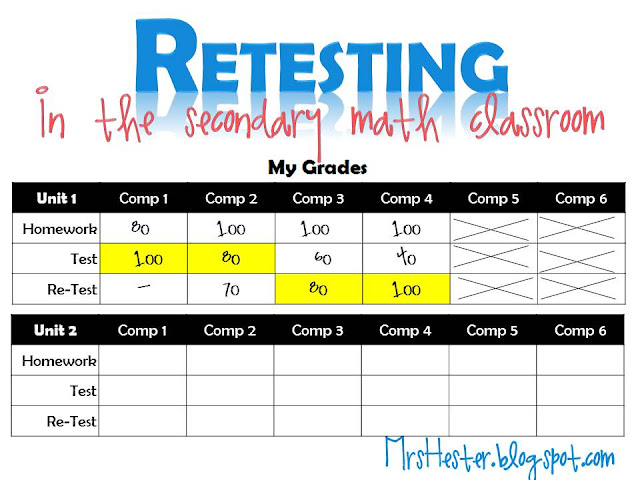How I Grade Interactive Notebooks
...drum role please...
...
...
...
...
...
...
...
...
...
...
I DON'T
There. Secret Spilled.
I have only used math notebooks in my classroom for a year, so it's very possible that my opinion will change, but so far I haven't seen the need to grade them. My students loved them and they were an integral part of our classroom almost daily last year. I never once took a "notebook grade."
I had the expectation that my students keep up with them, and honestly, they loved using them so much that they enjoyed keeping them up to date.
Here are a few ways I quickly checked progress without assigning any point-value grades.
(1) Visual checks as students work. Most of what is in our notebooks took place during class time. I would give students time to complete the activities or set-up pages and walk around to monitor/assist. Students knew we weren't moving on to anything else until all members of our learning team (that's what I call a class) had accomplished the task. They usually stayed on task and worked quickly but thoroughly.
(2) I collected and graded individual assignments from time to time. If there was something specific assigned, I would walk around the room and look at each students' notebook very quickly while they completed a warm up or other independent activity. I carry my grade book with me and usually check mark students who are done correctly and make quick notes about students who need to fix specific things. I mention these things to students and they show me their notebook at a later time after the error has been fixed.
Sometimes students completed small review activities and turned in their notebooks on test day. While they took their tests I quickly checked their assignments. The red hanging system is how students turn in their homework daily, by number order so it's already alphabetized for me. :) It's the little things, right? Anyway... Since they are used to that system they just stick their notebook in their file on test day, I pull it out and grade the assignment (usually a review completion grade), and then put it right back in their numbered pocket. By the time they are done testing, their notebooks are graded. They pick up their notebooks from their pockets before leaving the classroom.
(3) Sometimes I let students use their notebooks on quizzes. This is usually an unannounced thing and they pick up on it very quickly after the first time. They keep their notebooks in order hoping that I'll say "notebooks out!" during the next quiz. Sometimes I do, sometimes I don't.
So Why Did I Hide It?
I dunno... I guess I felt kind of guilty. That "everyone else seems to be taking a grade, am I doing this wrong?!" feeling, ya know? But the conclusion I've come to... it works for me! And whatever you decide to do has to work for you. It's your classroom and your students. You're the one that will be living it daily and you have to choose a system that fits you. Don't feel pressured to comply with what everyone else is doing just because they're doing it. Dare to be different, right?! That's what we tell our kiddos!
Ideas for the future:
I have read a few ideas online and seen some pins that I might implement. I plan to keep most of what I mentioned above the same, it worked well for me, I just might add some little things to the mix.
(1) Choose between one and four students each day to look through their notebooks for completion and neatness. This will be for a small grade each time, maybe once per unit. I might try to integrate this into a warm-up rotation schedule I've been pondering. More to come on that later!
(2) Ask students to leave their notebooks in the classroom over a designated night (when they don't need them to complete a homework assignment). Grade about 5 notebooks, chosen at random, and record the grades. Students will be informed the next class period whose notebooks were graded.
(3) Have students take a quiz using another student's notebook. They will then care what their classmates are putting into their notebooks. Kiddos telling other kiddos to keep their notebooks up to date - golden! What would not be so golden is a great student having to use a sub par notebook on a quiz when their notebook is A+ work. Hmmmmm... Not 100% sold on this one yet.
If you choose to collect and grade notebooks, go for it! Just do it because you see value in it and it's a worthwhile endeavor in your classroom, not because you feel like you have to.
So there it is... my method for grading, or not grading rather, interactive notebooks.









